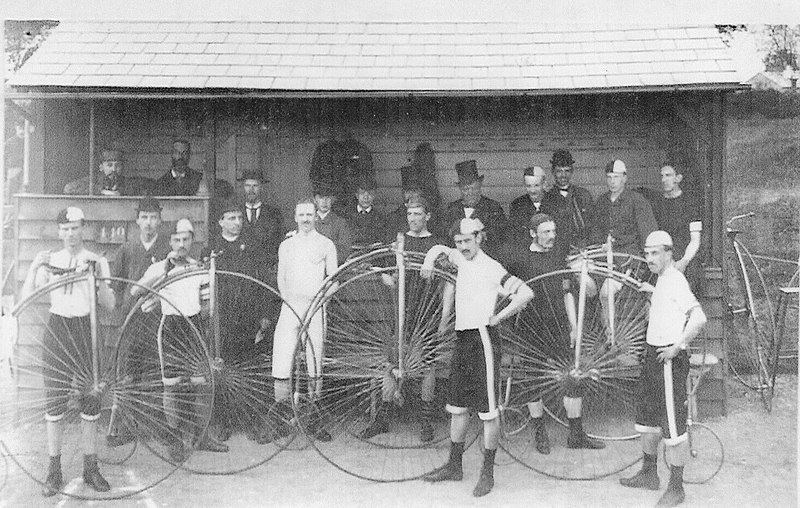


Hillier in the Badminton Library describes the path as "the track which held for a long while pride of placed amongst English cycling paths was that at Cambridge. It is composed of a whitish oolite* mixed with gravel, but through want of attention is very seldom in good condition; there is usually a fairly smooth 18-inch path round which the training men ride, and once in a way it is into good shape all over. When really in condition it is second to no path in the kingdom. It is situated in a field some little way out of Cambridge, is circular, 4 laps to the mile, not very wide. On one side it is raised slightly from the level of the field, on the other it runs through a sort of cutting. There is a dressing-room but not much accommodation."
The most famous member of the CUBiC was Ion Keith-Falconer, a remarkable man standing 6ft 3" with an athletic body who, in his day, was probably the best cyclist in the country. He notably beat ‘Jack' Keen in 1878, who was probably the best rider in the world. In 1882, Keith-Falconer rode from Land's End to John o' Groats for fun, in 13 days. He was a devout Christian and went to Aden as a missionary and died of fever in Yemen aged 30.
The track was used regularly for Oxford v Cambridge races and the Cambridge Independent Press of May 11th 1878 announced "On Saturday next the Oxford and Cambridge University Bicycle Races take place on the University Ground, when there will be a capital afternoon's sport. On the following Wednesday, Thursday and Friday the races will be continued. On the last named day the Invitation Four Mile Race will take place, at which some of the best bicycle riders in England will take part."
The University organised a two miles race on 21st May 1879 between amateurs and professionals, by special permission. The amateurs were Ion Keith-Falconer and Herbert Liddell Cortis, the professionals were John ‘Happy Jack' Keen and Fred Cooper. The race was won by Keith-Falconer in 5 min 36.6 sec, a British record time that stood for four years.
The University path was used for non-university meetings, the YMCA Bicycle Club held their annual races there in 1881.
By the late 1890's, the University bicycle club was in decline and the lease for the University Bicycle Path was not renewed in 1898. The land was built on for housing and is now the northern part of Robinson College.
*Oolite (egg stone) is a very fine sedimentary rock formed from calcium carbonate in spherical grains 0.25-2mm diameter.